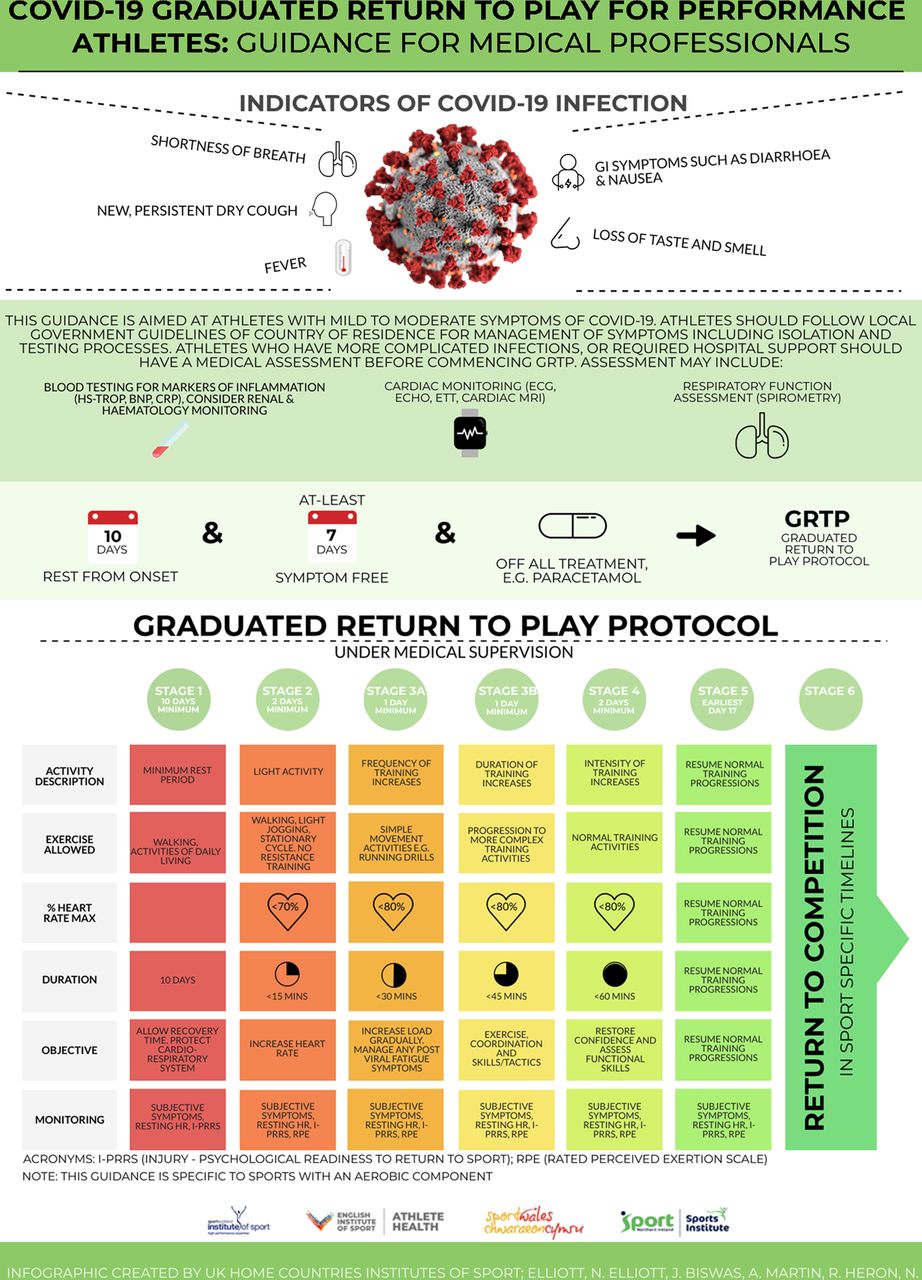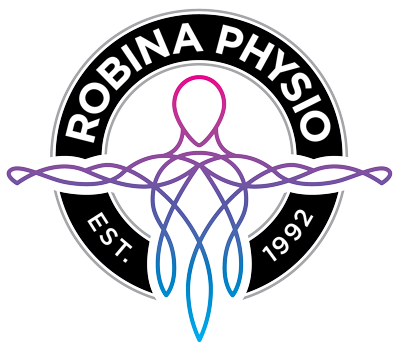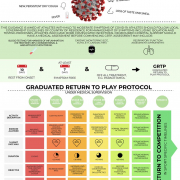Exercise After COVID Pt 2 (April 2022 update)
Exercise After COVID Pt 2 (April 2022 update)
By Aaron Woolley, Physiotherapist
Australia is making its way through another COVID-19 wave. Thankfully it appears that our health system has sustained this wave extremely well so far. But with another wave means more people getting ill, isolating, recovering and trying to return to exercise.
For the majority of people this should hopefully be a relatively easy task. But we are still seeing people having ongoing health issues long after COVID has passed.
When I wrote my first part of this blog there wasn’t very much peer reviewed evidence to follow for guidelines. Now there is some more information available as we are able to see how other countries are progressing that were technically further along in the pandemic than Australia.
Below I will provide a new infographic from the British Journal of Sport Medicine which provides some further insight in how to return to exercise after COVID-19 infection. The overall premise and much of the guideline appears to remain unchanged but it has broken the progress down into a few extra steps. I feel this would extra helpful for those that may be recovering a bit slower or perhaps in a vulnerable or elderly population. But first here is a quick recap on the risk categories of patients with COVID.
Low risk – includes:
- Mild or no symptoms resolved within 7 days
- Upper respiratory infection only
- Younger patients (aged <50 years)
- Recreational exercise goals.
Intermediate risk – any or more than 1 of:
- Patients who experienced prolonged symptoms or fatigue (>7 days)
- Ongoing shortness of breath or chest pain, which did not require hospitalisation.
- Dyspnoea (breathlessness)/chest pain with illness
- Elite and/or endurance athletes
- Older patients (aged >50 years)
- Those with pre-existing co-morbidities that may affect recovery eg asthma, chronic fatigue.
High risk:
- Individuals who required hospitalisation / ICU
- Patients with any evidence of system involvement outside the respiratory tract
- Prolonged shortness of breath or chest pain at rest or with activities of daily living
- Significant cardiac co-morbidities, history of cardiac disease, or abnormal electrocardiogram (ECG) or blood test findings during the illness.
Low risk patients should be able to return to exercise after COVID without requiring any further investigations. Although intermediate and high risk patients may need further investigations (e.g ECG) and monitoring. Therefore it is always recommended you consult your local medical professional before starting your return to exercise after COVID.
 Figure 2 Adapted from Elliot et al 2020
Figure 2 Adapted from Elliot et al 2020
IMPORTANT NOTE: If any symptoms occur (including excessive fatigue) while going through the return to play protocol, the athlete must return to the previous stage and progress again after a minimum of 24 hours’ period of rest without symptoms.
I hope you found this update helpful and get back into exercise after COVID. If you need further assistance the Physio’s at Robina Physiotherapy on the Gold Coast are here to help. Contact us on (07) 5578 7233 or BOOK ONLINE.
Resoures
- Elliott N, Martin R, Heron N, et al. Infographic. Graduated return to play guidance following COVID-19 infection. BJSM 2020; 54:1174-1175. [Accessed 19 January 2022] https://bjsm.bmj.com/content/54/19/1174



